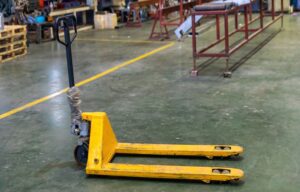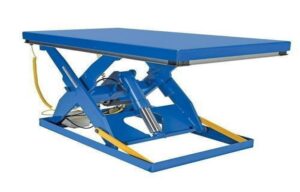Inventory management is one of the most neglected elements of warehouse optimization. Proper stock control and inventory management is necessary so that when goods are needed, they are there when required and without overstocking or understocking. It has number of flaws like manual counting and spreadsheets are error prone or inefficient. Today, warehouses are implementing AI-based inventory management systems that offer real-time updates and analytics. They are used in conjunction with warehousing equipment like automated storage and retrieval systems to keep track of accurate stock levels and enable quicker replenishment.
Barcode and RFID (Radio Frequency Identification systems) systems revolutionized inventory control in warehouses. By applying these technologies, workers could quickly scan and track products and reduce human errors; plus, it also makes processes accurate. The need for better tracking in such ecosystems helped the development of technology like radio-frequency identification (RFID) that allows goods to be tracked in real-time across the warehouse for more seamless order fulfilment. When coupled with material handling equipment such as conveyor systems and robotic pickers, then efficiency can be dramatically increased. Intelligent inventory management allows businesses to eliminate waste, minimize storage expense and maximize workflow to keep pace with increasing market demands.
Sustainable Warehousing: Equipment Optimization and Energy-Efficient Practices
With the shift of all businesses towards sustainability, the optimization of warehouse equipment for energy and cost efficiency is gaining much-needed attention. Facilities are increasingly adopting energy-efficient designs that address the need to cut down on operational costs and environmental impact. LED or solar-powered lighting systems, solar-powered warehouses, and battery-operated forklifts are all ways in which businesses can build a greener warehouse.
Electric forklifts and energy-efficient conveyor systems both decrease carbon footprints and lower fuel and electricity expenses. Implementing smart energy management solutions can enable businesses to track and manage energy consumption, guaranteeing maximum efficiency without excess. Sustainable practices in warehouses also provide government incentives and reduced operating costs long-term. Energy-efficient material handling equipment maximize warehouse productivity while contributing to international sustainability efforts.
Bottleneck Reduction & Work Process Automation
Bottlenecks in warehouse operations remain one of the biggest challenges to mitigate impact on supply chain velocity. Overcoming these bottlenecks requires a deep dive into warehouse workflow, examining the movement of inventory through various stages of storage, picking, packing and shipping. Strategically positioning warehousing equipment such as pallet racks, workstations, and conveyors within your facility can lead to higher warehouse efficiency.
Automation is also a crucial component of eliminating bottlenecks. AI powered sorting systems, robotic picking systems and automated guided vehicles streamline warehouse operations by ensuring a seamless flow of goods all contributing to an improved bottom line. These technologies minimize manpower and save time. During peak times, a well-organized system stops the backlog of work and ensures they receive their orders on schedule. Investments in automation, especially advanced material handling equipment, allow companies to manage more orders with higher accuracy and speed.
How will Industry Trends Shape the Future of Productivity in Warehousing
New trends are changing the warehouse industry at lightning speed. With rapidly increasing e-commerce volumes, omnichannel fulfillment and same-day delivery expectations, warehouses are forced to implement more sophisticated solutions. AI robotics, IoT analytics, and smart warehousing devices are becoming the norm in the industry to stay competitive.
Cloud-based warehouse management systems (WMS) have also come to span most if not all of a business’s supply chain with real-time data across multiple warehouse locations. With greater visibility comes the ability for warehouse managers to use data to make informed decisions about space, labor, and inventory optimization. Every warehouse that embraces these innovations will indeed experience optimal productivity and success now and in the near future, as technology continues to grow at a rapid pace.
Conclusion
Warehouse optimization in terms of warehousing equipment efficiency is an continual process, requiring strategic investments in both warehousing and material handling equipment. From automated storage and retrieval systems to AI-driven inventory management and robotic pickers, the appropriate equipment can vastly increase efficiency, lower costs, and improve overall productivity. The future of warehouse management is being transformed through the adoption of sustainable warehousing practices, intelligent inventory tracking, and workflows powered by automation. To achieve this, businesses need to keep abreast of the latest industry trends and implement new technology in time to facilitate a high-performance warehouse that can meet the needs of today’s fast-paced supply chain.






Be First to Comment